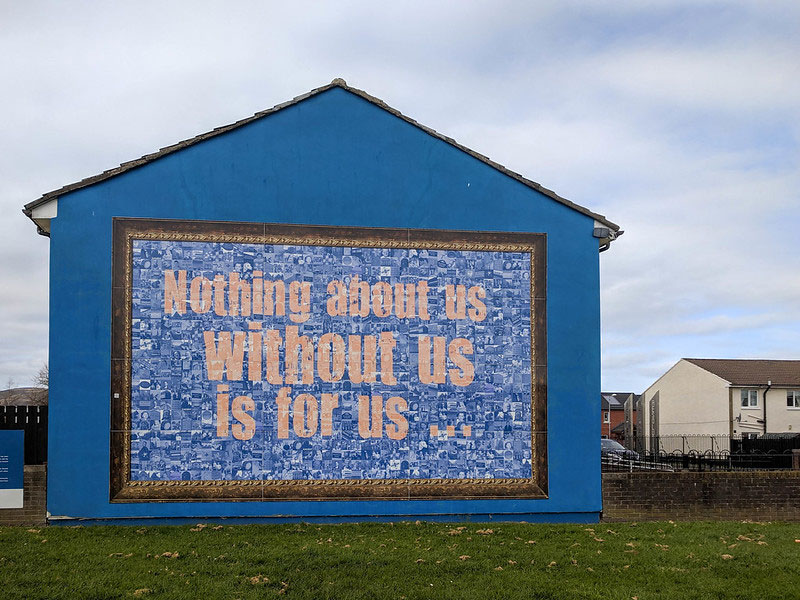Nonprofit leaders have, in the last few years, begun actively reconsidering the whole concept of governance as it currently exists. Frustration with the current form and function of many boards leave us yearning for something better—something effective. Some have gone so far as to suggest that we should do away with boards altogether. We suggest that we might first want to look at what we can do to make our boards what they were meant to be—and to work in more productive and creative partnerships with our boards. Toward that end we submit the following set of emerging principles of practice for your consideration. Some of these principles have come from recent research about what makes for highly effective boards—some are just good ideas that take us back to the basics of what the board role is supposed to be.
We have used these principles in our own consulting practice to spark discussions on how boards can become more relevant and valuable to the organizations they govern. We don’t use them prescriptively but ask board members if one or two ideas on the list attract them powerfully enough to change their current practice. Subsequent discussion tends to be highly creative, energetic, and relevant. Working the resultant positive energy and motivation towards principled change can be far more effective than working from pat formulas for redressing multiple problems.
To jolt you out of any sleepy conventional space you may be inhabiting, I urge you to look back at Peter Block’s article on governance in the last issue of NPQ, where he attacks the concept of oversight boards.
For full discussion of these principles, please consult the resources at the end of this article.
Mission Orientation: This is nothing new; the mission should be the thing from which all else in the organization derives, but many boards are unclear about how to integrate the mission actively into their discussions. Virtually everything the board thinks about should be considered for mission relevance; it is only through such active use of the mission that real interpretation and implementation occurs. How often does the board include the sentiments of the mission in its discussions?
Vertical Integration of Mission: The board should also be satisfied that the mission is understood throughout the organization and is being actively used everywhere as a lens. Staff should initiate and maintain this focus but the board should be assured of it. How do you know that staff understands and actively uses the mission in its decisions? Does staff have sufficient time for reflection? Is there time for mission discussions between the staff and board?
Horizontal Integration of Mission: Very few third-sector organizations can accomplish their missions in isolation from the other organizations in their field of practice. Boards should meet with other boards doing complementary work to discuss best possible use of resources towards best possible outcomes for common constituents. This has been a very intriguing idea for many boards; one board recently asked itself: “Why aren’t we meeting with the other boards of organizations dedicated to lifting the residents of our neighborhood out of poverty?” What other boards might you need to meet with to do the work more effectively? What are the barriers?
Ends Orientation: Are you clear about the ultimately desired outcomes of the agency’s work? Do you have critical indicators by which you measure your success? Do you use these tools to measure your program accomplishments each year but drive beyond that also to look at progress towards a larger vision? Many organizations end up settling for the accomplishment of means rather than ends. One organization recently asked itself “Our mission is to eliminate poverty among families and children in this neighborhood but what we do merely alleviates it—what are we doing wrong?” Do you believe in your mission? Are you dedicated to seeing it accomplished? Are current activities the right activities to be engaged in? How do you know? Do you have a theory of change that holds water?
Future Orientation: Planning cycles are becoming increasingly short term, as the rate of change in our environments accelerates. Developing the capacity to move with change without losing mission focus and a strong ends-orientation is progressively more challenging. Boards may use scenario planning or other methods to plan for contingencies and get where they intend to go. Does this organization have a shared, detailed sense of what a desired future would look like at the end of a pre-set period of time (five years – ten years)? Has this been developed in company with the other stakeholders who would have to be engaged to make it happen? Do we remain aware of what may be changing in our environment so we know when to re-plan?
Absolute Fidelity to Those in Whose Name You Do Business: Who are your organization’s primary constituents? On whose behalf are you organized? In many nonprofits, the people using the services (your primary constituents) are not the same as those that buy them (your funders). John Carver, author of Boards that Make a Difference, calls this a “muted market.” The result is that there may be a delay in understanding when your offerings fall short of your constituents’ needs and desires. Creating opportunities for two-way board dialogue with primary constituents is an important aspect of the board’s responsibility. Is this a regular part of the board’s responsibilities? Is it deep enough to allow for real conversation and an exploration of both differences in perspective and commonalities of goals?
Sign up for our free newsletters
Subscribe to NPQ's newsletters to have our top stories delivered directly to your inbox.
By signing up, you agree to our privacy policy and terms of use, and to receive messages from NPQ and our partners.
Board Members Are Informed and Information Is Relevant and Contextualized: Board members need information about the constituency, field of endeavor, funding environment, etc. A constant flow of information, including industry material and articles on relevant subjects should be circulated. Some boards establish study groups or mini-seminars for members on issues of particular strategic relevance; these meetings may also include staff and collaborators. Some boards are being creative about keeping members informed on line. Do we always understand context for discussions and decisions? How could we ensure that this occurs?
Board Meetings Are Reserved for Work That Has Meaning: Verbal reporting or information sharing should not consume meeting time. The board should have clear, shared expectations about its business—and a large part of its business should be a dynamic planning process that periodically examines the assumptions on which programs and strategies are based. Focused meetings allow for thorough dialogue around core concerns and the board’s own work plan. This requires setting up evaluative procedures that surface and answer the organization’s own questions about its practice. Planning and evaluation is most effective when done as a group that includes at least board and staff.
Few Policies of Best Intentions: The Board provides a “cradle” of a few well constructed policies that lay out for the executive director and the staff the best intentions of the agency towards itself and its constituents. This allows the board to move into a non-reactive stance and comfortably leave the day to day management in the hands of staff. Remember that Moses brought only ten Commandments back from the mount. If you could set only three to ten policies for the governance of this organization what would they be? One example of a far reaching policy might be: “This organization must have at least 40 percent of its budget covered by unrestricted funds and no one funding source may account for more than 25 percent of its budget.” What would this policy imply to you regarding the intention of the board towards the agency? Toward its constituents? What would it suggest in terms of support needed from the board? One organization we know went further and made a policy that no more than one half of its budget could come from anyone other than its constituents. Even as an exercise this can focus a board on its core value stream in a way that a handbook of hundreds of detailed policies could not.
Fluid Ad Hoc Committee: Develop a practice of convening more fluid and ad hoc committees that mirror the strategic priorities of the organization. Do away with unnecessary standing committees. Add staff and community members to your ad hoc committees and make them time limited and product oriented.
Make Sure the Right People Are on the Board: Yes, board members should have connections and skills, but you should also be sure that they are present for the right reasons. Do they have a personal mission that fits within and complements the mission of the organization? Can they act as good team members? Do you have the right elements for the chemistry you are trying to achieve? Are your members willing to engage in productive conversation and not allow disagreements to remain unspoken?
Again, this list of core principles of extraordinary boards is for use only as a discussion starter so that you may get a sense of where the energy for changing practice exists in a particular board. Locating this energy for change before you start a change process makes the whole thing much easier.
Ruth McCambridge is the director of program development at Third Sector New England.
John Carver, Boards That Make a Difference, A New Design for Leadership in Nonprofit and Pubic Organizations. San Francisco: Jossey-Bass Publishers. 1997.
Barbara E. Taylor, Richard P. Chait and Thomas P. Hall, “The New Work of the Nonprofit Boards,” Harvard Business Review (September 1996).













